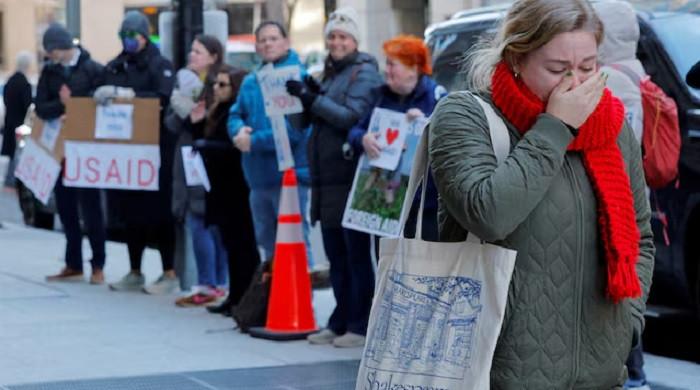More than 14 million most vulnerable people in the world, one third of them young children could die because the Trump administration dismantled the foreign aid of the United States, the research projected on Tuesday.
The study in the prestigious Lancet Journal was published when world and business leaders meet for a UN conference in Spain this week, hoping to reinforce the staggering help sector.
The United States International Development Agency (USAID) had provided more than 40% of world humanitarian funds until Donald Trump returned to the White House in January.
Two weeks later, Trump’s then advisor, and the richest man in the world, Elon Musk boasted of having put the agency “through Woodchipper.”
Financing reduces “the risk of abruptly stopping, and even reversing, two decades of health progress among vulnerable populations,” warned the study co -author, Davide Rasella, researcher at the Global Health Institute of Barcelona (ISGlobal).
“For many low and medium income countries, the resulting shock would be comparable to a global pandemic or a great armed conflict,” he said in a statement.
Looking back on the data of 133 nations, the International Researchers team estimated that USAID financing had prevented 91 million deaths in developing countries between 2001 and 2021.
They also used modeling to project how financing was reduced by 83%, the figure announced by the United States government earlier this year could affect mortality rates.
The cuts could lead to more than 14 million avoidable deaths by 2030, they found the projections. That number included more than 4.5 million children under five years old, or around 700,000 children’s deaths per year.
In comparison, it is estimated that around 10 million soldiers were killed during World War I.
The researchers found that the USAID programs were linked to a 15% decrease in deaths from all causes. For children under five years old, the drop in deaths was twice more steep at 32%.
It was discovered that USAID financing was particularly effective to avoid preventable deaths of the disease.
There were 65% less HIV/AIDS deaths in countries that received a high level of support compared to those with little or no USAID financing, according to the study. Malaria deaths and neglected tropical diseases were cut in a similar way to half.
It’s time to climb
After Usaid was destroyed, several other important donors, including Germany, the United Kingdom and France, did the same when announcing plans to reduce their foreign aid budgets.
These aid reductions, particularly in the European Union, could lead to “even more additional deaths in the coming years,” said Caterina Monti Study Co -author of Isglobal.
But the gloomy provocations for the deaths were based on the current amount of promised aid, so they could decrease rapidly if the situation changes, the researchers emphasized.
Dozens of world leaders meet in the Spanish city of Seville this week for the largest help conference in a decade. United States, however, will not attend.
“Now is the time to climb, not climbing again,” Rasella said.
Before its financing was reduced, USAID represented 0.3% of all federal expenses in the United States.
“American citizens contribute about 17 cents per day to USAID, around $ 64 per year,” said Co -author of the James Macinko study of the University of California, Los Angeles.
“I think that most people would support the continuous financing of USAID if they knew how effective it can be such a small contribution to save millions of lives.”




